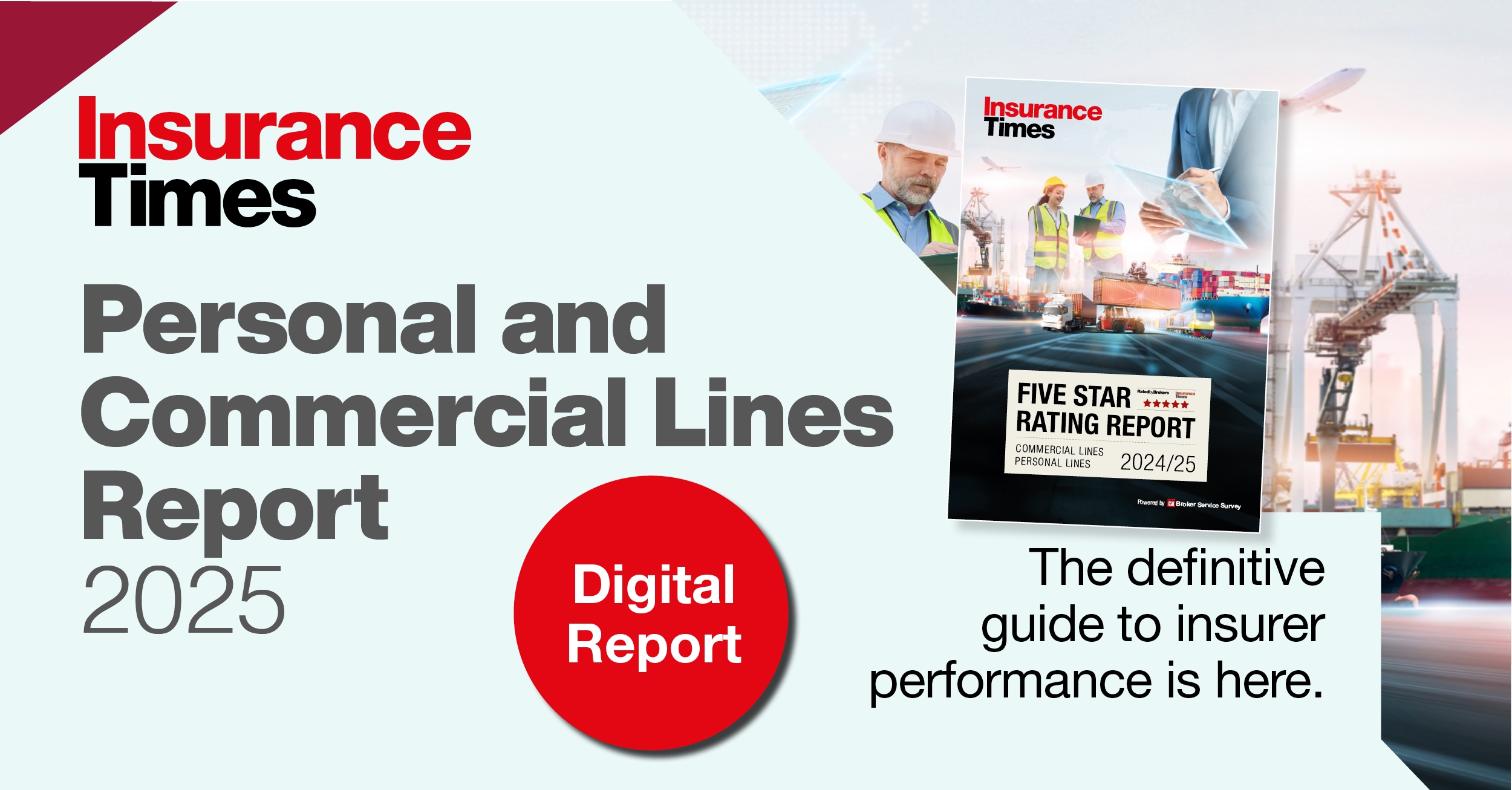Insurance DataLab co-founder Matt Scott dives into the the market’s latest SFCRs to draw out a number of trends
The UK general insurance market has been experiencing some tough times of late, with a myriad of challenges from claims inflation to climate change and cyber crime to political instability all combining to create an incredibly complex marketplace – particularly when it comes to the severity and frequency of claims.

Indeed, the average gross claims incurred by UK and Gibraltarian insurers have climbed in each of the last four years.
UK-regulated insurers reported average claims totalling £390m for 2023/24, up from £317m the previous year – an increase of 23% – while average claims incurred by Gibraltarian insurers rose by almost 24% to more than £245m.
In such a landscape, the risks faced by insurers in some ways seem greater than they ever have been in recent years, maybe with the exception of during the aftermath of the Covid-19 pandemic, and premiums in many markets have similarly climbed northwards.
It should, therefore, be no surprise that insurers are seeking refuge in higher reserves and committing more funds to their capital requirements under Solvency II to help ride out the storm and bring more stability to their capital base.
Higher capital levels
Analysis of insurer Solvency and Financial Condition Reports (SFCRs) by market intelligence firm Insurance DataLab, published exclusively by Insurance Times, reveals that the average solvency coverage ratio for UK-regulated insurers now stands at 188% for 2023/24.
This represents the highest solvency coverage ratio since Insurance DataLab started analysing the market in 2017/18, when it stood at just 174%.
| Average Solvency Coverage Ratios | |||||||
|---|---|---|---|---|---|---|---|
|
2017/18 |
2018/19 |
2019/20 |
2020/21 |
2021/22 |
2022/23 |
2023/24 |
|
|
UK |
174% |
173% |
174% |
179% |
177% |
178% |
188% |
|
Gibraltar |
150% |
145% |
152% |
171% |
151% |
140% |
162% |
Indeed, the average solvency coverage ratio has increased in four of the last six years, after the average ratio fell back by two percentage points to 177% in 2021/22 following a slight spike to 179% in the 2020/21 Covid years.
Gibraltarian insurers, meanwhile, have continued to report a lower average solvency coverage ratio than their UK peers, something that has long been a trait of insurers operating on The Rock.
The current average solvency coverage ratio for insurers regulated in Gibraltar is 162%, some 26 percentage points behind their UK peers.
This is, however, still 22 percentage points ahead of 2022/23, when the average solvency coverage ratio stood at just 140% – the lowest of all the years that make up this analysis. It is also the second-highest solvency coverage ratio for Gibraltarian insurers over the last seven years, with only 2020/21 seeing a higher ratio when the average stood at 171%.
This was just eight percentage points behind UK insurers for that year, as insurers looked to strengthen their capital base in response to the increased risks presented by the Covid-19 pandemic.
Reinsurance ceding
It is worth noting, however, that Gibraltarian insurers are much more likely than their UK counterparts to cede high levels of premiums to reinsurers.
Indeed, over the last seven years, Gibraltarian insurers have taken out more reinsurance every year – with the exception of 2020/21 when UK-regulated insurers carried out large reinsurance deals following the Covid-19 pandemic.
In 2023/24, Gibraltarian insurers reinsured a little over 62% of total premiums, while UK-regulated insurers reinsured less than 46% of premiums, with both figures remaining relatively stable over the last seven years – except for a spike in UK levels of reinsurance in 2020/21.
These high levels of reinsurance in the Gibraltarian market, combined with a lower premium base, mean that insurers operating out of Gibraltar have a much lower average level of solvency capital requirements – meaning that they have to hold lower levels of capital in order to meet their capital requirements.
Gibraltarian insurers had an average solvency capital requirement of £60.6m in 2023/24 – the first year in which this figure broke through the £60m barrier and only the second year that it exceeded £50m.
UK-regulated insurers, meanwhile, reported an average solvency capital requirement of £230.4m for 2023/24 – the third straight year for which this figure stood above £200m.
Minimum ratios
When it comes to minimum coverage ratios – the level below which an insurer is deemed insolvent under Solvency II regulations – the difference between UK and Gibraltar-regulated insurers remains clear to see.
| Average Minimum Coverage Ratios | |||||||
|---|---|---|---|---|---|---|---|
|
2017/18 |
2018/19 |
2019/20 |
2020/21 |
2021/22 |
2022/23 |
2023/24 |
|
|
UK |
495% |
484% |
493% |
512% |
502% |
481% |
496% |
|
Gibraltar |
367% |
360% |
379% |
419% |
388% |
368% |
402% |
UK insurers reported an average minimum coverage ratio of 496% in 2023/24, whereas Gibraltarian insurers reported a ratio of 402%.
Both of these levels sit below the peak that occurred in both markets in 2020/21, when the UK minimum coverage ratio stood at 512% and the corresponding figure for Gibraltarian insurers was 419%.
The long-term picture is a bit different, however, with Gibraltarian insurers reporting a 35 percentage point increase in the average minimum coverage ratio since 2017/18. For UK-regulated insurers the ratio has increased by just one percentage point, with the gap between the two jurisdictions closing significantly.
Top 50 Insurers
To coincide with the launch of this year’s Top 50 Insurers report, Insurance DataLab – which also provides the data for the analysis – has also analysed the effect of the size of an insurer’s gross written premium (GWP) on their solvency position.
For those insurers that feature in the 2024 edition of the Top 50 Insurers, the average solvency coverage ratio stands at 179% for 2023/24, which is seven percentage points lower than the 186% market average across the whole of the UK and Gibraltarian insurance market.
This is also the lowest average ratio when compared to insurers with different premium bases.
Indeed, those insurers that are ranked between 51 and 100 when ranked by GWP have an average solvency coverage ratio of 209%, while those outside of the top 100 reported an average ratio of 268%, according to the latest set of SFCRs.
Service levels
With so much capital tied up to maintain a strong solvency position for insurers in both the UK and Gibraltar, the amount of resources able to be deployed to improve services and product offerings will be limited.
This position will only be exacerbated by the ongoing pressures insurers are facing when it comes to underwriting profitability, with the aggregate combined operating ratio (COR) across the UK and Gibraltar standing at a loss-making 101.8%.
This marks the second consecutive year of underwriting losses for the market after it fell into loss-making territory in 2022/23 with an aggregate COR of 100.1%.
And this will be of concern to brokers, who continue to experience poor service levels from insurers. The Insurance Times Five Star survey revealed an average score of 3.79 for personal lines insurers in 2024, down from 3.91 the previous year.
In commercial lines, the picture is a bit better with an average score of 3.84 for 2024. While this represents a 0.8 point improvement on 2023, it is still only marginally better than in 2020, when the average score stood at 3.81.
With the added pressures of Consumer Duty laying heavy on brokers, the market has been hoping for some time that the situation regarding insurer service levels will improve. But, without the necessary investment in teams and services, it remains to be seen whether or not insurers will be able to deliver the required improvements.
The rising solvency ratios across both the UK and Gibraltar markets reflect a cautious approach by insurers facing mounting risks
However, the financial stability provided by higher capital reserves comes at a potential cost – hindering service improvements and product innovations, both of which brokers and consumers are increasingly demanding.
As the industry continues to evolve amidst these challenges, striking the right balance between solvency and service quality will be critical for ensuring long-term success.












































No comments yet